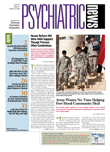Even though a specific type of electric light has been found effective for treating seasonal affective disorder (SAD) and light boxes are widely available at affordable prices, this form of treatment does have a notable drawback. It requires sitting in front of a light box on a daily basis.
An equally effective but more practical treatment for SAD may now have been found by Kelly Rohan, Ph.D., an associate professor of psychology at the University of Vermont, and her colleagues. It is cognitive-behavioral therapy (CBT).
A few years ago, Rohan and her colleagues designed a group CBT protocol to counter SAD. It was a modification of Aaron Beck, M.D.'s cognitive therapy for major depressive disorder. The primary treatment component of Beck's therapy, namely the cognitive restructuring of negative automatic thoughts and core beliefs, was framed in ways to help patients cope with winter-specific negative thoughts. For instance, patients would use diaries to identify and track negative thoughts about, say, the oppressive darkness of winter mornings or the sullen monotone landscape of winter. The therapist would then challenge these thoughts.
Patients would also be encouraged to engage in enjoyable activities during winter, for example, social activities, hobbies, or exercise, to bolster their mood and deter them from oversleeping or “hibernating.”
Then Rohan and her group undertook a pilot study to see whether the group CBT protocol that they had designed was effective. Subjects were randomized to receive, for six weeks, either the protocol, light therapy, or a combination of the two. Subjects were evaluated for SAD symptoms both at the start of the study and six weeks later. Subjects in all three groups showed significant and comparable improvement.
Moreover, regarding the treatment of SAD over the long haul, CBT may be better than light therapy, a new study by Rohan and her team suggests. In this study, 52 SAD subjects who had randomly received CBT, light therapy, or both during one winter were evaluated the following winter to see how they were coping with SAD. Whereas over a third of the group that had received light therapy again experienced SAD symptoms, only 7 percent of the CBT group did—a significant difference. Only 6 percent of the group that had received both CBT and light experienced SAD symptoms.
Yet when the researchers took into consideration any current SAD treatments that subjects were pursuing on their own—four were using light therapy and nine antidepressants—only the results for the CBT group remained significant, not those for the CBT-light group.
Thus, CBT might “represent a more effective, practical, and palatable approach to long-term SAD management than light therapy,” Rohan and her group concluded. Their study was published in the September Behavior Therapy.
“This is an interesting and potentially important finding since CBT is well known to be effective for other types of depression,” Raymond Lam, M.D., a professor of psychiatry at the University of British Columbia and a SAD authority, told Psychiatric News. “However, this is only a preliminary study, and the conclusions cannot be generalized at this time because of the very small sample size and other limitations in study methodology.”
In their paper, Rohan and her colleagues agreed that their results “require replication in a larger, more definitive study.” Meanwhile, the results have implications for psychiatrists, she believes.
“One implication is that psychiatrists may need to think outside the light box to keep SAD patients well over time,” she told Psychiatric News. “Because daily light therapy must be used consistently during the symptomatic months each year, psychiatrists need to seriously consider and discuss barriers to compliance with their patients. They should also consider thoughts and behaviors in developing a case conceptualization for a given SAD patient (for example, ‘Do certain maladaptive thoughts and/or a pattern of behavioral disengagement play a role in triggering or maintaining seasonal symptoms?’). And they should consider incorporating CBT strategies into their treatment plans for SAD patients or referring patients to an experienced CBT therapist.”
The study was funded by the National Institute of Mental Health and the Uniformed Services University of the Health Sciences.
An abstract of “Winter Depression Recurrence One Year After Cognitive-Behavior Therapy, Light Therapy, or Combination Treatment” can be accessed at <www.sciencedirect.com/science/journal/00057894> by clicking on the September issue. 
